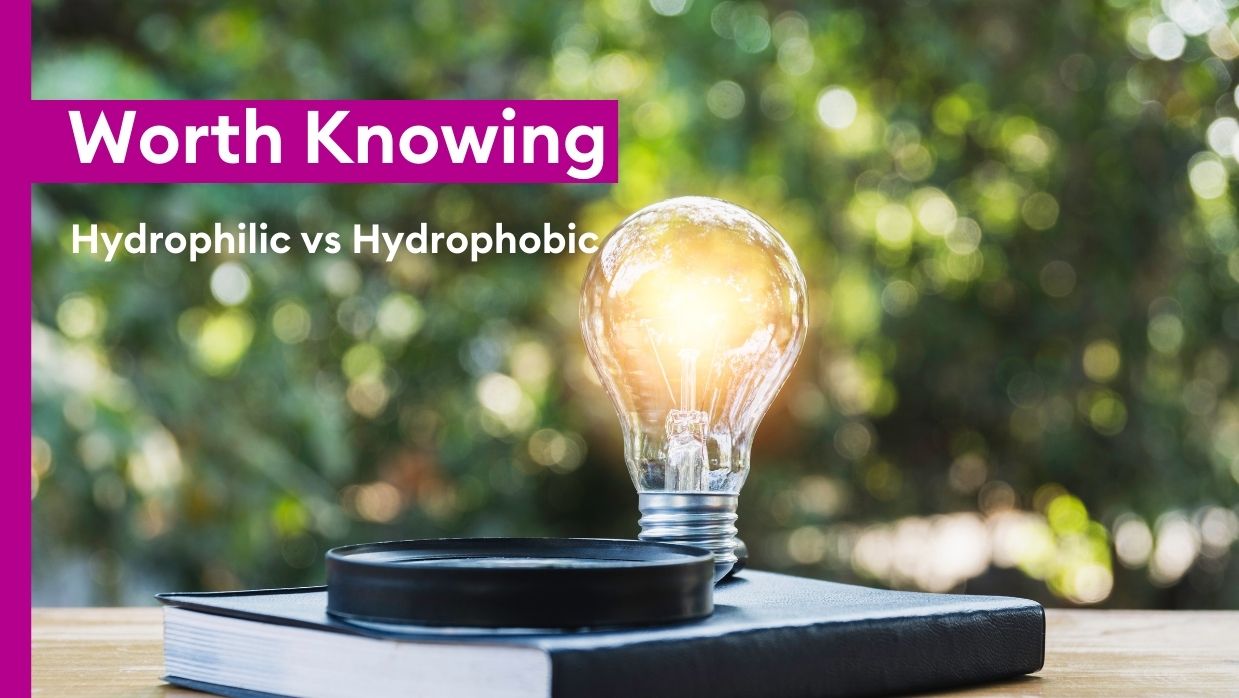Here is our vipur tip for the first important distinguishing feature when choosing a membrane filter:
Hydrophilic versus Hydrophobic Membrane
You want to filter something with a membrane - but don't quite know which membrane you should use to achieve the desired results? In addition, each membrane has its own special properties, hence our tip for you:
The first important question is:
What do you need to filter - liquid or gas media?
There are two main types of membrane:
- hydrophilic membranes → filtration of liquid substances
- hydrophobic membranes → filtration of gas substances
What is there to say about them in brief?
Hydrophilic membranes
Hydrophilic membranes are “more or less easily” permeable to water and, as already mentioned, are therefore used for liquid filtration.
Their structure usually differs depending on the material. The most common at present are:
- Polyethersulfone membranes (PES)
- Polyvinylidene fluoride membranes (PVDF)
Depending on the pore size, they are used for bioburden reduction through to virus filtration.
Hydrophobic membranes
Hydrophobic membranes are generally impermeable to water. As a rule, because there are of course various exceptions here too. Normally, PTFE membrane filters are mainly used for sterile gas filtration.
- Polytetrafluoroethylene membranes (PTFE)
They are characterized by high strength and high chemical compatibility. In practice, this means that PTFE membrane filters can be used for three-digit steam sterilization cycles with up to 145°C/30min in the direction of flow and against the direction of flow. By reducing the surface tension, these membranes become hydrophilic and can be used, for example, for the sterile filtration of aggressive liquids.
Here is an important note:
Please note that wetting of the hydrophobic membrane with liquid must be prevented.
What are the most common sources of error/possible problems?
Since many PTFE sterile air filters are used for fermenter supply and exhaust air, the formation of condensate and/or foaming of the fermentation medium is a given.
Possible solutions:
- In the event of condensate formation (= wetting of the hydrophobic PTFE membrane with liquid), the use of a filter housing heater is a relatively simple solution.
- If the fermenter frequently foams over, causing the hydrophobic PTFE membrane to block, a polypropylene pre-filter may be a solution.
Another membrane type would be hydrophobic PVDF. However, this is only used peripherally due to the limited supply and, above all, the lower air flow rates.
Hydrophilic or hydrophobic membranes - the difference is as simple as that, but there are certain points to consider when using them.
We are happy to provide you with this information for download on our website.
See you next time - we look forward to further filtration.
Have a nice day,
the vipur Team
